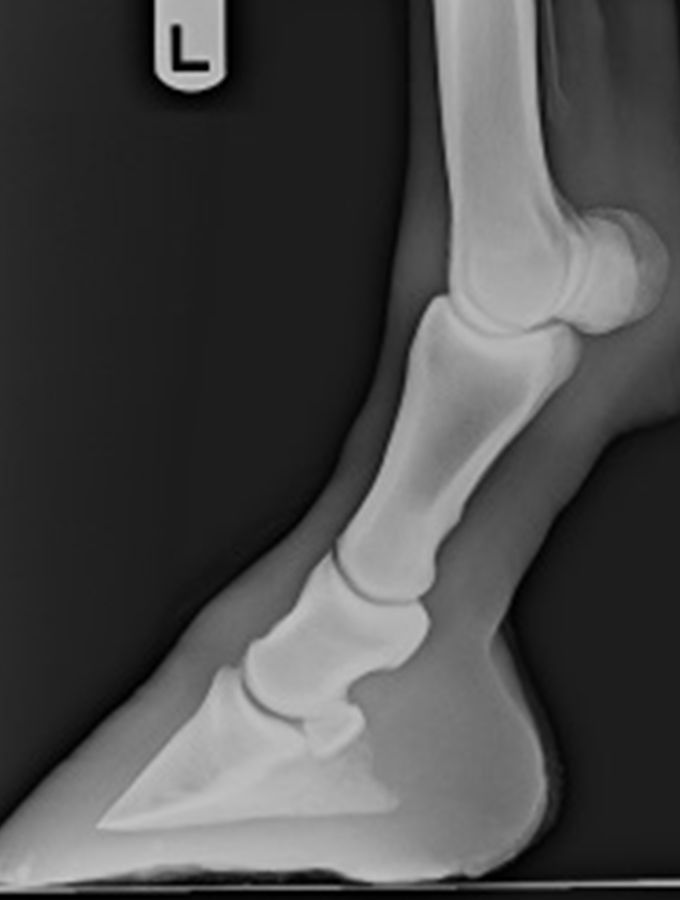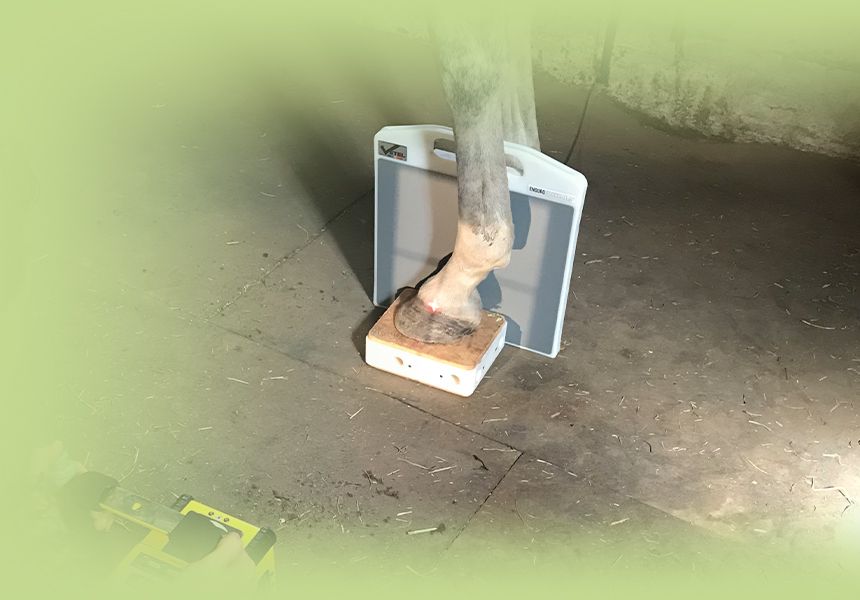Our system is capable of obtaining superior quality digital radiographs.
Ultrasonography is used for diagnosing soft tissue injuries, whereas x-ray is used for diagnosing bone and joint disease. Having both digital diagnostic modalities allows us to complete a thorough lameness/laminitis evaluation.
Digital radiography allows for faster acquisition of radiographic images than standard radiography and provides the highest resolution possible. Digital radiography images allow manipulation of brightness and contrast, as well as enlarging the image itself.
This technology helps us detect very small problems not visible on traditional x-rays. Under high magnification, images remain very clear and retain sharp contrast. With this technology, the doctors can measure angles and distances between bones to provide clear diagnoses of issues ranging from acute lameness to minor arthritis.
Our system is capable of obtaining superior quality digital radiographs both in the clinic and in the field, and the images are immediately available for viewing in either setting.
Digital radiography allows for faster acquisition of radiographic images than standard radiography and provides the highest resolution possible. Digital radiography images allow manipulation of brightness and contrast, as well as enlarging the image itself.
This technology helps us detect very small problems not visible on traditional x-rays. Under high magnification, images remain very clear and retain sharp contrast. With this technology, the doctors can measure angles and distances between bones to provide clear diagnoses of issues ranging from acute lameness to minor arthritis.
Our system is capable of obtaining superior quality digital radiographs both in the clinic and in the field, and the images are immediately available for viewing in either setting.





